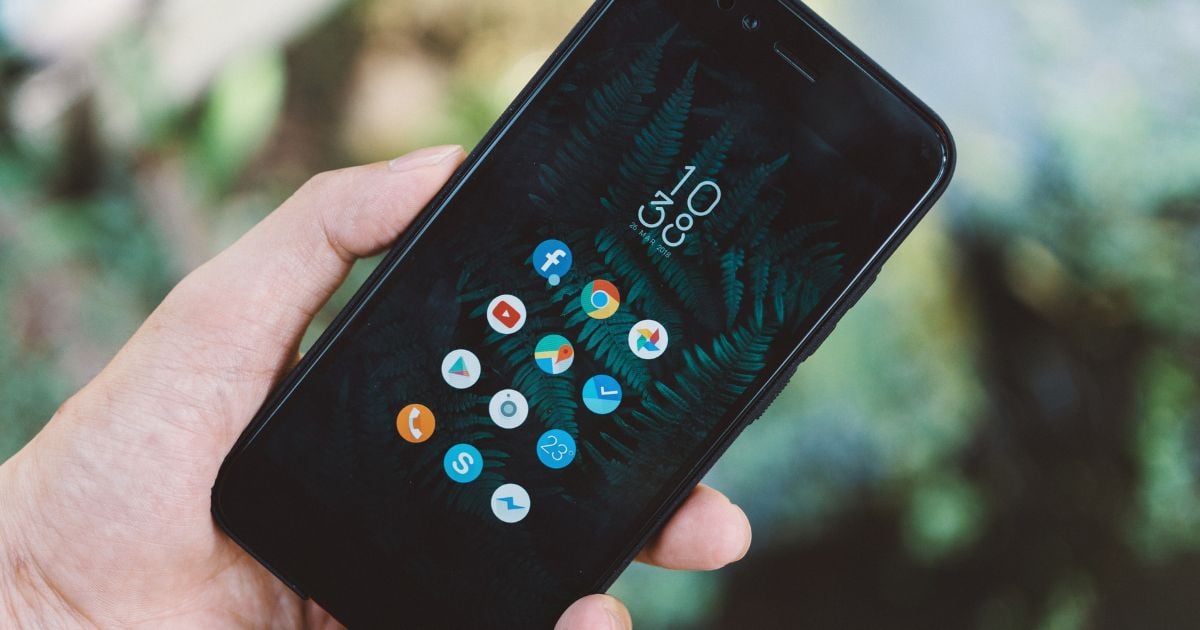App Design Cost: A Complete 2024 Breakdown
-%20copy.jpeg?width=1200&height=630&name=What%20is%20Mobile%20Cloud%20Computing%20(MCC)-%20copy.jpeg)
Key Takeaways
- The cost of mobile app design varies significantly based on complexity, platform choice, and the design team’s location, with prices ranging from $3,000 to over $200,000.
- Prioritizing essential features and utilizing templates can effectively manage and reduce app design costs, allowing businesses to focus on core functionalities.
- The app design process is divided into discovery, design, and development phases, each influencing overall costs and requiring careful planning for accurate budgeting.
What Influences App Design Cost?
Several factors influence the cost of designing a mobile app, with complexity being a significant one. Features, screens, and interactions all contribute to the overall design expense.
Platform choice also plays a crucial role. Whether designing for iOS, Android, or cross-platform, different guidelines and requirements impact the software costs. The design quality, including visual elements like colors and typography, can elevate the user experience while adding to expenses. Budgeting should focus on essential features, allowing for adjustments to manage costs effectively.
Specific aspects like platform choice, app complexity levels, and team location distinctly impact mobile app design costs.
Platform Choice
Your chosen platform significantly influences design costs. Designing for iOS, especially for iPhone 6 and later, can add about 25% to UI/UX costs. Android design often incurs higher costs due to a greater variety of devices and guidelines.
Cross-platform tools like React Native and Flutter can lower costs by enabling a single codebase for multiple platforms, streamlining the development process, and reducing the need for additional resources.
App Complexity Levels
App complexity also significantly affects design costs. Apps fall into three categories: Basic, Mid-level, and Complex apps. Basic apps, with fewer than four screens and minimal interactive features, focus on a single task with simple designs and authentication, leading to lower costs. An app idea in the Basic category would typically require less investment.
Mid-level apps, on the other hand, feature 10–25 screens, multiple interactive elements, and moderate backend requirements. Complex apps, which are feature-rich and data-intensive, can have more than 25 screens and require continuous iteration.
Understanding the app’s complexity helps in making informed decisions about budgeting and design strategies.
Team Location and Type
The location and type of design team also influence costs. Freelancers typically charge $15-$25 per hour, local agencies up to $150 per hour, and offshore teams offer competitive pricing and access to quality skills without high overhead rates.
Choosing between in-house, freelance, or agency teams requires careful consideration of budget and project requirements.
Mobile App Design Cost Ranges
Before:
Cost ranges for different mobile apps are essential for budgeting. In 2024, designing a mobile app will cost between $3,000 and $30,000, depending on complexity. Simple apps generally cost $3,000-$15,000, medium complexity apps $15,000-$35,000, and complex apps, with advanced features and extensive data requirements, range from $25,000 to $200,000+.
After:
Cost ranges for different mobile apps are essential for budgeting. In 2024, the average app design cost for designing a mobile app is between:
- $3,000 and $15,000 for simple apps.
- $15,000 and $35,000 for medium-complexity apps.
- $25,000 to $200,000+ for complex apps, with advanced features and extensive data requirements.
Real-world examples and case studies show that the scope of a project greatly influences the final app design price. Whether you’re looking to develop a basic app or a feature-rich platform, understanding these cost ranges can help you plan your budget effectively.
Simple Apps
The cost range for designing a simple mobile app in 2024 typically lies between $5,000 and $10,000. Simple apps focus on a single task with minimal user interaction and straightforward designs. They are ideal for businesses looking to launch a basic app without extensive features or complex functionalities.
Medium Complexity Apps
Medium-complexity apps usually cost between $15,000 and $20,000. These apps feature multiple interactive elements, moderate backend requirements, and some data storage.
Building a mobile community platform within this range can take less than four months.
Complex Apps
Designing complex mobile applications typically exceeds $20,000, starting from $15,000. These apps require advanced features, extensive third-party integrations, and intricate animations, driving up the mobile app development cost to design custom mobile app design. If you’re wondering how much it costs, it’s important to consider these factors.
Understanding these costs is crucial for businesses planning to invest in comprehensive, feature-rich applications.
Additional Costs in App Design
Additional elements significantly impact the overall budget. Visual designs and UI elements, such as icons and images, can elevate costs. Advanced UI elements and custom illustrations further drive up expenses. User testing and prototyping are also critical components consuming a significant portion of the budget.
Incorporating these elements into your app design helps ensure a high-quality user experience but requires careful budgeting. Understanding these additional costs allows for better financial planning and resource allocation throughout the app development process.
Visual Designs and UI Elements
Visual design choices, like color schemes and typography, influence app design costs and user experience. Using a limited color palette can streamline the process and reduce costs.
Typography not only defines the aesthetic but also impacts how users perceive and interact with the app.
Illustrations and Animations
Illustrations and animations can significantly increase costs due to added time and effort. Custom illustrations can differentiate an app but may raise the overall project budget.
Therefore, it’s important to balance the need for unique visuals with the available budget.
User Testing and Prototyping
User testing is crucial for gathering feedback to refine usability, ultimately affecting design costs. Regular feedback can improve user experience and decrease long-term costs. Prototyping helps identify design flaws early, potentially saving on later revisions.
Managing and Reducing App Design Costs
Managing and reducing app design costs is crucial for businesses. Focusing on core functionalities can significantly lower expenses. Collaborating with an experienced design team enhances creativity and delivers better outcomes. High-quality app design services can improve user retention and increase revenue.
Strategies to manage costs include prioritizing essential features, using templates and pre-made libraries, and outsourcing design tasks. These approaches help streamline the design process and reduce unnecessary expenses.
Prioritize Essential Features
Careful planning determines crucial features and functionality, ensuring the app meets user needs effectively. Prioritizing essential features aligns design efforts with what adds the most value to users.
Adopting a minimum viable product (MVP) approach can speed up time to market and reduce initial design costs.
Use Templates and Pre-made Libraries
Using templates and pre-made libraries can enhance efficiency by providing pre-built components. These resources reduce the time spent on individual elements, lowering overall design costs.
UI Kits can further streamline the design process by supplying pre-designed user interface elements.
Outsource Design Tasks
Outsourcing design tasks offers competitive pricing, established workflows, and access to expertise. Benefits include cost reduction, fresh perspectives, and no in-house expenses. However, managing freelancers can be time-consuming, and they might show less commitment with limited access to design tools.
The average hourly rate for outsourcing design teams ranges from $25 to $65.
The App Design Process and Its Impact on Cost
The app design process includes three main phases: discovery, design, and development, each impacting overall costs. A comprehensive project brief leads to a more accurate cost estimate. During development, the app’s design is brought to life through coding, followed by testing. User testing identifies areas for enhancing user experience and hidden problems.
Understanding these phases and their cost implications helps in effective budgeting and resource allocation. Each phase has its unique challenges and cost drivers that need careful management.
Discovery and Planning Phase
In-depth market research is essential for identifying target users, understanding their needs, and determining their willingness to pay. The discovery phase focuses on understanding the problem, including market research and user journey mapping.
Planning during this phase is essential for finalizing the app design idea and targeting end users effectively.
Wireframing and Prototyping
Wireframes are visual representations of the app’s structure, serving as blueprints to identify usability issues before development. High-fidelity prototypes provide detailed interactive mockups, ensuring the final product aligns with the original concept.
This stage helps refine the user experience and outline the app structure.
Final Design and Development Handoff
The final design stage includes creating comprehensive visual elements like:
- UI components,
- Colors,
- Typography,
- Other assets.
This phase ensures clarity and efficiency, providing developers with the necessary specifications and assets for implementation.
User testing during this stage helps refine the app design and improve usability based on feedback received.
Choosing the Right Design Partner
Choosing the right design partner is crucial for app project success. An in-house team offers better integration with company culture and rapid brand understanding, while external partners provide fresh perspectives and specialized expertise.
Evaluating portfolios and checking references are essential steps in selecting a design partner. These steps offer insights into the partner’s reliability, design sensibility, and problem-solving approach.
Evaluating Portfolios
Reviewing a design partner’s portfolio offers insights into their design sensibility and showcases the types of apps they have created. Case studies reveal how they solved specific design challenges and their problem-solving approach.
Client testimonials and online reviews offer valuable insights into their reliability and interaction style.
Checking References and Reviews
Checking references and reviews provides a deeper understanding of a design partner’s capabilities and past performance. Testimonials give insights into the design process and client interaction. Analyzing case studies shows how a partner approaches design challenges and achieves client goals.
Social media platforms can also help understand the company’s culture and values.
Summary
Understanding mobile app design costs is essential for effective budgeting and planning. Key factors influencing costs include platform choice, app complexity, and team location. Additional expenses related to visual designs, illustrations, and user testing should also be considered. By prioritizing essential features, using templates, and outsourcing design tasks, you can manage and reduce costs effectively.
Choosing the right design partner is crucial for the success of your project. Evaluating portfolios and checking references ensures partner with a reliable and skilled team. By understanding these elements, you can navigate the app development process efficiently and achieve a high-quality, cost-effective mobile app.
Frequently Asked Questions
What factors influence the cost of building a mobile app?
The cost of building a mobile app is influenced by scope, complexity, selected technologies, and team composition. Understanding these elements is crucial for accurate budgeting and project planning.
How can the complexity of a mobile app be categorized?
The complexity of a mobile app can be categorized into three types: Basic, Mid-level, and Complex. Each category reflects the app's features and functionality, helping you understand the development requirements.
What distinguishes native app development?
Native app development is distinguished by the necessity of separate teams for Android and iOS platforms, which often results in higher overall costs. This approach allows for optimized performance and user experience tailored to each operating system.
What are the benefits of using a consulting agency for app development?
Utilizing a consulting agency for app development ensures access to a specialized team with extensive expertise, which enhances project outcomes through comprehensive services. This partnership actively contributes to the success and efficiency of your development process.
What are some strategies to reduce app design costs?
Prioritizing essential features, utilizing templates and pre-made libraries, and outsourcing design tasks can reduce app design costs. Implementing these strategies ensures a focus on core functionalities while maximizing resource efficiency.







